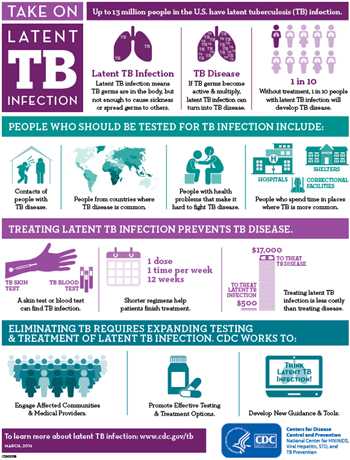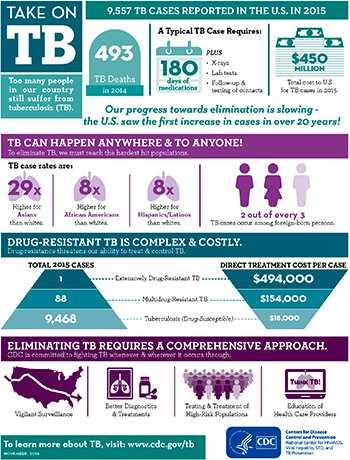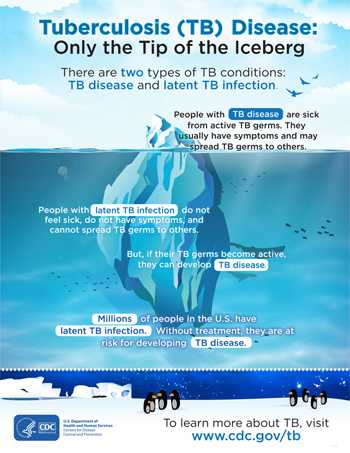Infographics
Take on Latent Tuberculosis (TB) Infection
- High-Resolution Flyer - 8.5x11 [779 KB, 1 page]
- Social Media Graphics
- Web-Ready Graphic [PNG]
Take on Tuberculosis (TB)
- High-Resolution Flyer - 8.5x11 [643 KB, 1 page]
- Social Media Graphics
- Web-Ready Graphic [PNG]
References:
- CDC. Reported Tuberculosis in the United States, 2015. Atlanta, GA: U.S. Department of Health and Human Services, CDC; 2016.
- Marks S, et al. Treatment Practices, Outcomes, and Costs of Multidrug Resistant and Extensively Drug Resistant Tuberculosis in the United States. Emerg Infect Dis 2014; 20(5) –Suzanne Marks estimated productivity losses due to premature deaths for non-MDR-TB and XDR-TB patients, and updated all estimates to 2015 dollars.
Tuberculosis (TB) Disease: Only the Tip of the Iceberg
- Flyer - 8.5x11[1.79 MB, 1 page]
- Poster - 11x17 [1.33 MB, 1 page]
- High-Resolution Flyer - 8.5x11 [8.08 MB, 1 page]
- High-Resolution Poster - 11x17 [8.22 MB, 1 page]
- Social Media Graphics
Tuberculosis (TB) Disease: Only the Tip of the Iceberg
- There are two types of TB conditions: TB disease and latent TB infection.
- People with TB disease are sick from active TB germs. They usually have symptoms and may spread TB germs to others.
- People with latent TB infection do not feel sick, do not have symptoms, and cannot spread TB germs to others. But, if their TB germs become active, they can develop TB disease.
- Millions of people in the U.S. have latent TB infection. Without treatment, they are at risk for developing TB disease.
- To learn more about TB, visit www.cdc.gov/tb.
Related Links
- Page last reviewed: April 17, 2017
- Page last updated: April 17, 2017
- Content source:


 ShareCompartir
ShareCompartir


